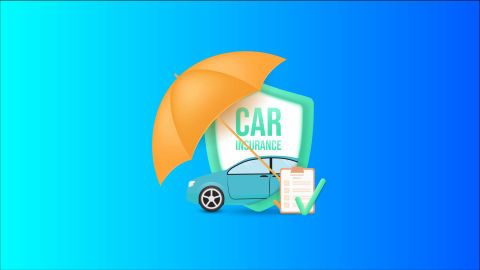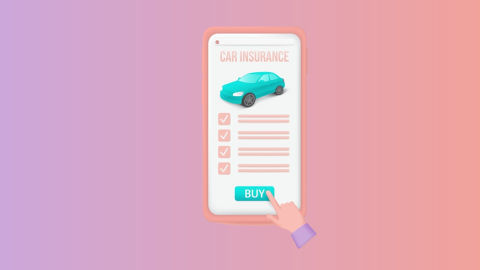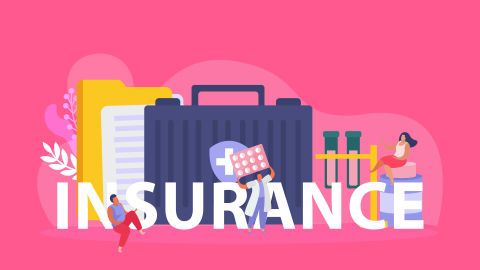Benefits of first-party car insurance
Here are the features and benefits of first-party insurance.
Comprehensive coverage
First-party car insurance offers extensive coverage that includes coverage against damages caused due to several reasons. This car insurance policy includes damages due to accidents, theft, floods, earthquakes, fire, riots, vandalism, etc.
Personal accident cover
Personal accident cover provides coverage for medical expenses incurred for treatment due to accidents. It covers accidental death or disability. You get personal accident cover up to Rs. 15 lakh. Some car insurance policies also cover passengers injured in an accident while travelling in the car.
Add-on covers
With first-party car insurance, you have the flexibility to avail of add-on covers. These add-on covers enhance your basic policy, giving you extra financial protection and covering the parts of vehicles usually not covered under basic plans. You can avail of add-on covers like engine protection, accessories cover, consumables cover, and more.
No Claim Bonus (NCB)
You also get the benefit of NCB. If you do not make any claims during the policy period, you get a bonus. You can accumulate up to 50% NCB over five years if you record claim-free years. You can use this bonus later to reduce the premium cost when renewing the car insurance policy.
You can check how to calculate the no claim bonus here.
Difference between first-party and third-party car insurance
Here’s a quick look at the difference between first-party car insurance and third-party car insurance.
Parameters
|
First-party insurance
|
Third-party car insurance
|
Coverage
|
First-party insurance covers damages caused to your own vehicle due to natural calamities, man-made activities, or accidents.
|
Third-party insurance covers only the damages caused to the third party’s vehicle or property, even injuries caused to them.
|
Personal accident cover
|
Offered up to Rs. 15 lakh.
|
Not available on third-party insurance.
|
Premium
|
First-party insurance comes at a higher premium because it offers extensive coverage.
|
Third-party insurance policy has a standard premium set by the IRDAI.
|
Mandatory
|
No, it is optional.
|
Yes, the Motor Vehicles Act mandates car owners to have third-party car insurance to drive legally on Indian roads.
|
Add-on covers
|
Available
|
Not available
|
How to buy/renew first-party car insurance?
You can easily buy a car insurance online on Bajaj Finance Insurance Mall by following the below simple steps.
Step 1
Click on 'Get Quote’ button on this page to visit the online application form.
Step 2
Enter the vehicle type, car registration number, mobile number, and residential pin code. Check the terms and conditions and click on the ‘Get Quote’ button below.
Step 3
Choose the IDV, NCB value, add-on covers, and plan type to get a list of relevant car insurance policies. You need to update your current policy expiry date here.
Step 4
Click on the ‘Buy Now’ button to choose a car insurance policy. You will need to add owner-driver personal accident cover mandated by the RTO. Click on ‘Next’ to proceed.
Step 5
Confirm the vehicle registration date and the previous policy type (comprehensive car insurance /third-party). Click on ‘Proceed’.
Step 6
Enter vehicle owner’s name, date of birth, residential address, and contact number. Also, enter vehicle engine and chassis number (as per the RC) and previous first-party insurance details.
Step 7
Review your previously filled details and make the payment through your preferred online payment mode. You can use net banking, UPI, credit/debit card to buy the policy.
How to file a claim under first-party car insurance?
You can make claim settlement requests in two ways, cashless and reimbursement. Here's a step-by-step guide on how to file a claim under first-party car insurance:
Step 1: Inform the insurance provider
The first thing that you need to do is inform your insurance provider about the incident and file a claim. You can do it either online or by visiting the nearest branch office.
Step 2: Provide details
Once you have informed the insurance provider, provide all the necessary details like the date, time, location, and details of the incident. Attach copies of all the relevant documents like your driving licence, registration certificate, and first-party insurance policy.
Step 3: Evaluation
The insurance provider will evaluate your claim and verify all the details submitted by you.
Step 4: Cashless or reimbursement settlement
The insurance provider will offer you two options - cashless claim settlement or reimbursement claim settlement. Cashless claim settlement is where the insurance provider directly pays the repair costs to the garage. Reimbursement claim settlement is where the policyholder gets the repair costs reimbursed after they pay the garage themselves




